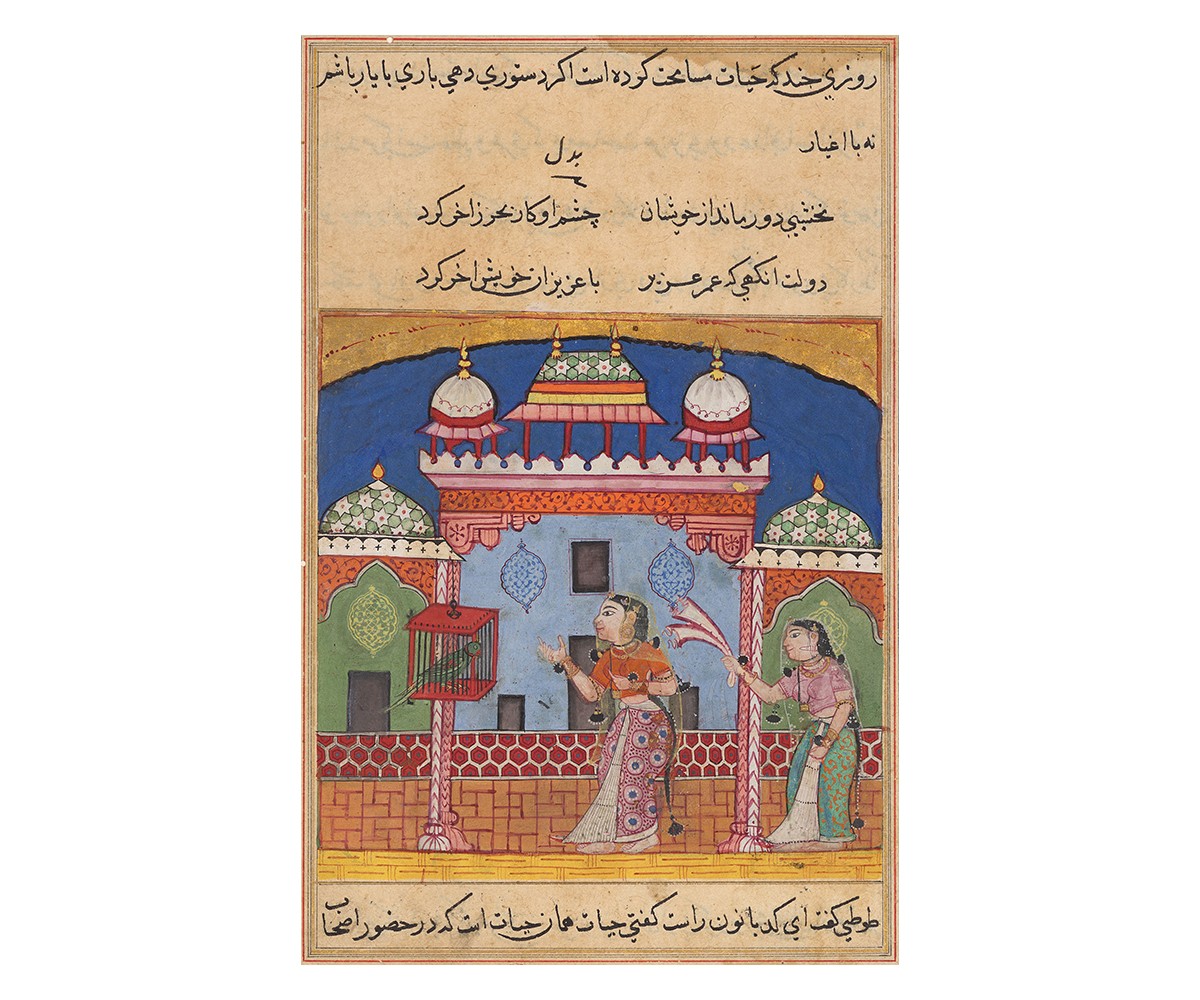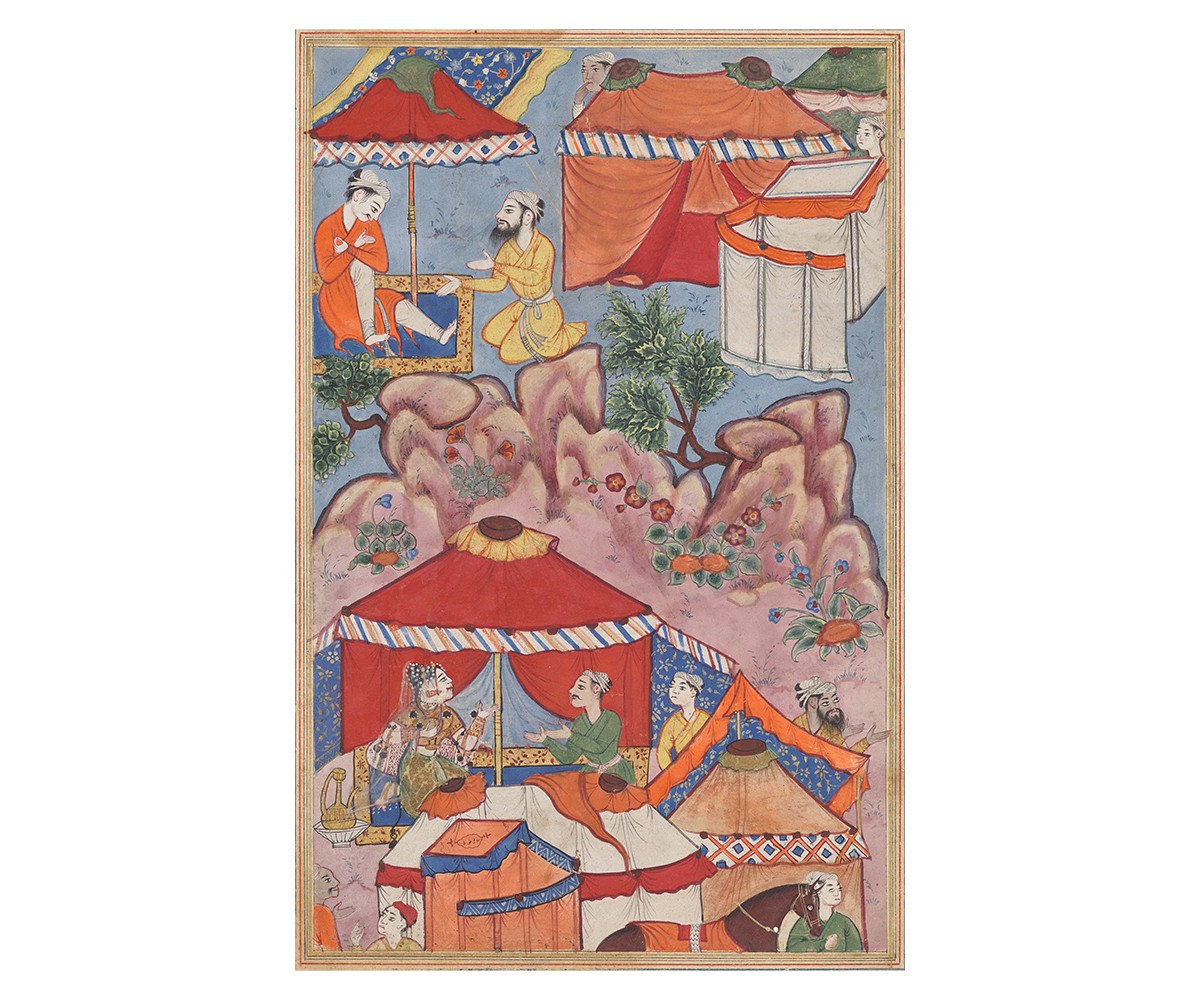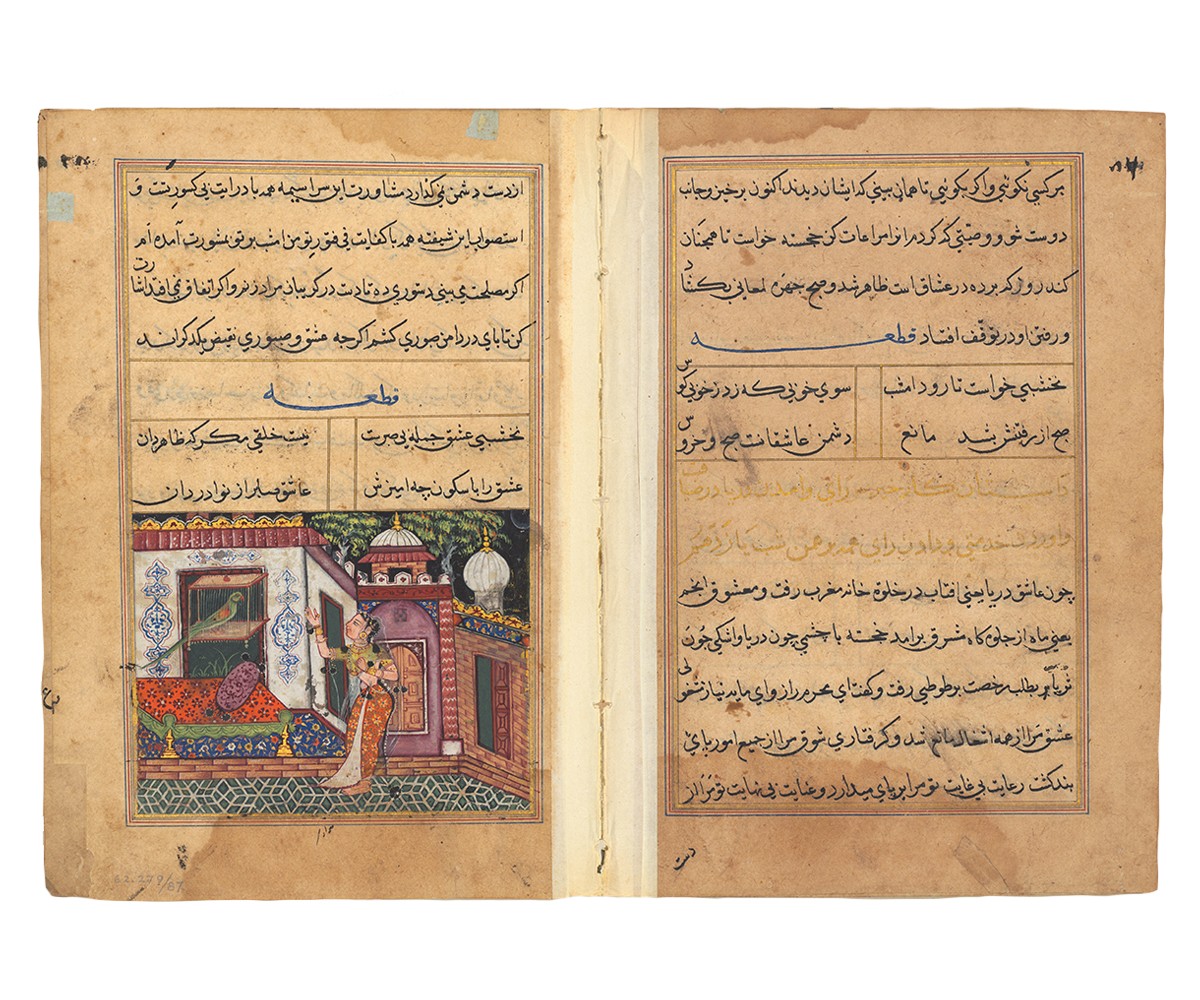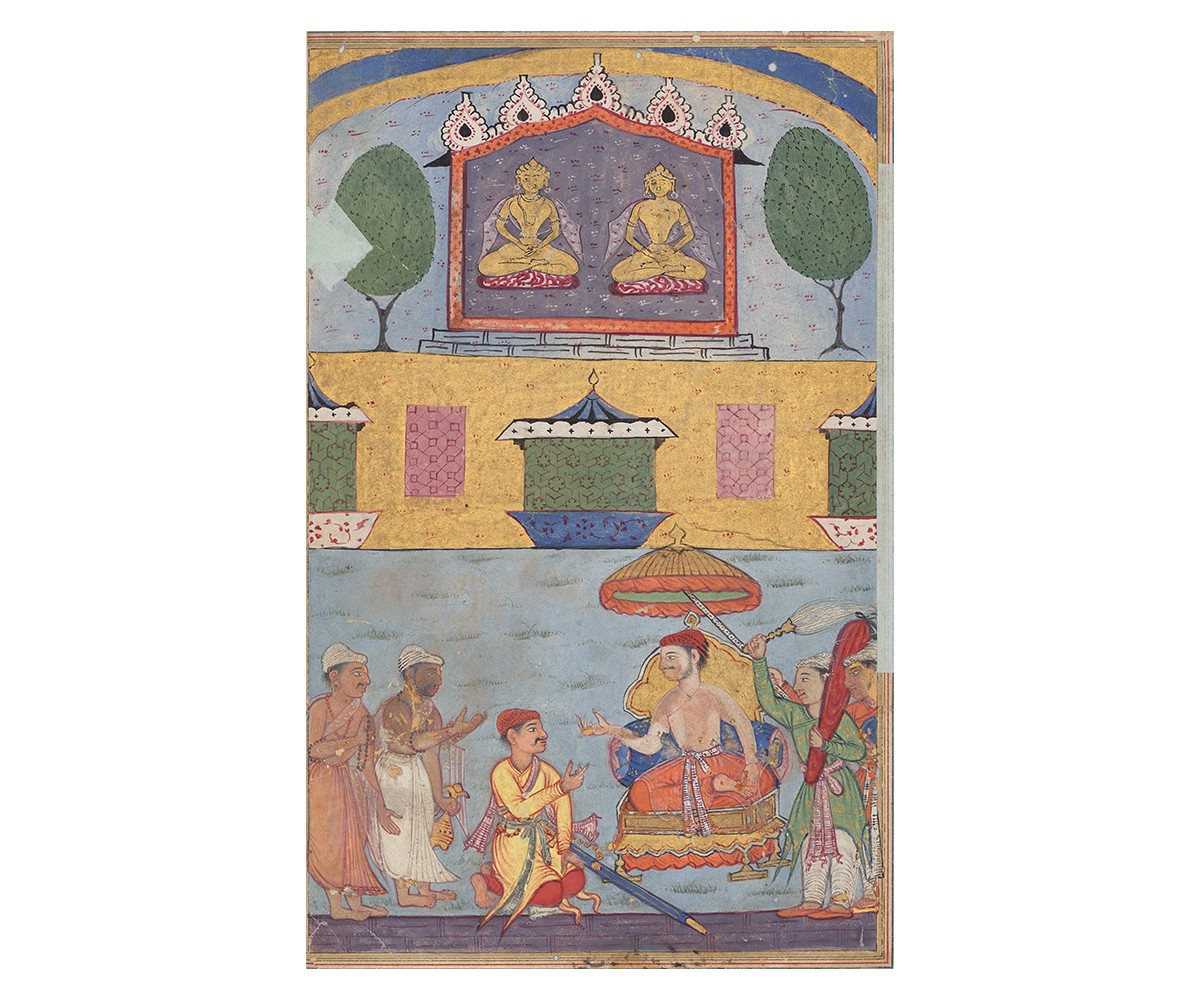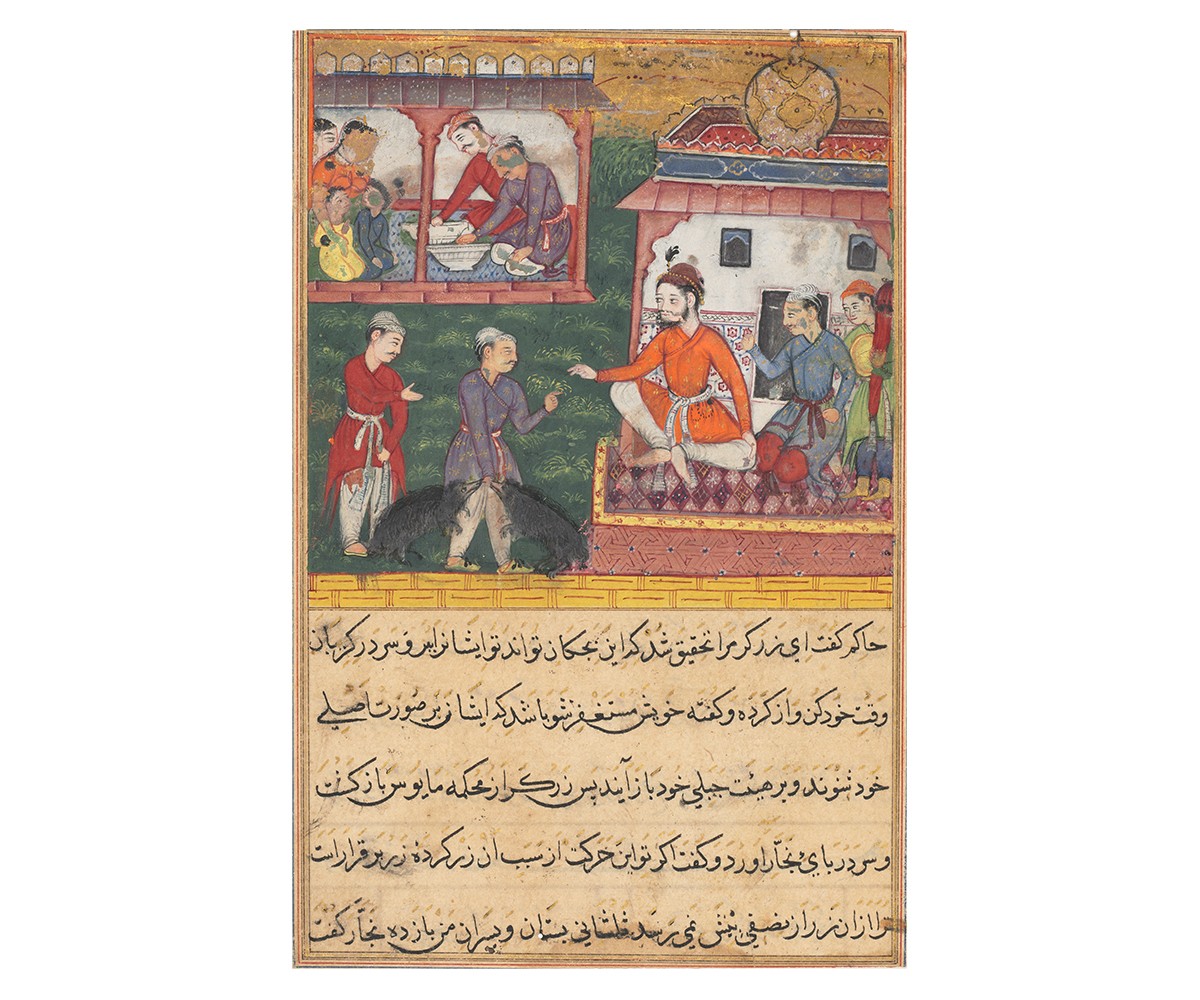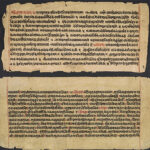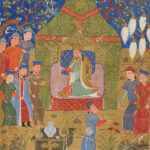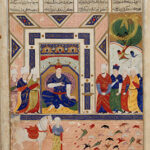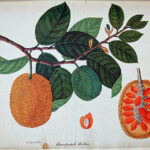The Tutinama is Illustrated
1560
A fourteenth-century literary work called the Tutinama is illustrated with patronage from Mughal emperor Akbar. The first version of this manuscript, completed in 1560 and consisting of 250 paintings, is believed to be the earliest example of Mughal miniature painting, commissioned at a time when the style was still taking shape.
The impetus given to manuscript illustration during Akbar’s reign increases with commissions of texts based on Islamic, Indian and European religious, historical and non-historical themes. The patronage attracts artists and artisans from different parts of the subcontinent, who adapt their distinct styles to the Mughal visual style, which in turn is influenced by Persian art. Jehangir and Shah Jahan also support manuscripts and paintings, with each reign marking a distinct style and approach. The Mughal Court’s diplomatic ties with the Rajput states of central and northern India also encourage the formation of court-supported workshops in these territories, with each atelier developing a visual style of its own.
Bibliography
Beach, Milo Cleveland. Mughal and Rajput Painting. Cambridge, UK: Cambridge University Press, 1992.
Krishna, Anand. “A Reassessment of the ‘Tuti-Nama’ Illustrations in the Cleveland Museum of Art (And Related Problems on Earliest Mughal Paintings and Painters).” Artibus Asiae 35, no. 3 (1973): 241–68. https://www.jstor.org/stable/3249561.
Sardar, Marika. “The Art of the Mughals after 1600.” In Heilbrunn Timeline of Art History. New York: The Metropolitan Museum of Art, October 2003. http://www.metmuseum.org/toah/hd/mugh_2/hd_mugh_2.htm.
Seyller, John. “Workshop and Patron in Mughal India: The Freer Rāmāyaṇa and Other Illustrated Manuscripts of ’Abd al-Raḥīm.” Artibus Asiae 42 (1999): 3–344. http://www.jstor.org/stable/1522711.
Feedback 
This entry appears in
Art in South Asia
Visit Timeline
Associated Timeline Events
First Published: March 11, 2024
Last Updated: July 2, 2024



